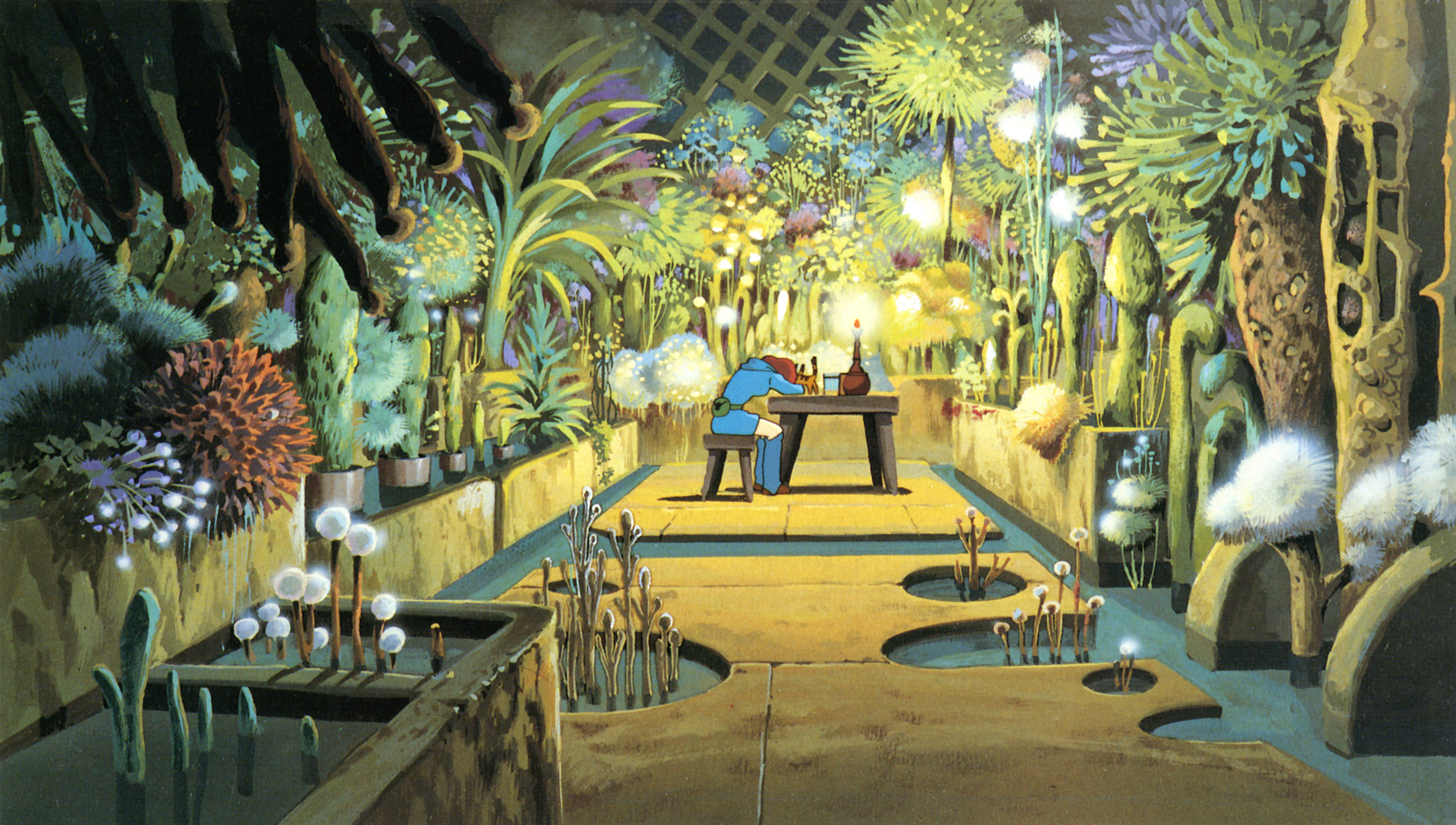
The story begins in ancient Japan, during a time of warring villages and samurai and monsters. Prince Ashitaka of the Emishi people is defending his village from a demon boar when he becomes cursed by the demon, and as a result he is given super-human strength while also that same power threatens to kill him from the inside. In an effort to find the source of the curse, Ashitaka follows the cause of the demon’s suffering, a ball of iron, to a mining town that is using the iron to build weapons. Traveling far to the west, he meets the Princess Mononoke in the forests, riding on the back of a large white wolf. In this time period, gods still exist amongst animals, they are larger than life forms of the animals we know today, and are intelligent and able to talk with humans. But something in the world is changing this. More and more animals are born unable to speak and the cause of this seems to lie with the humans.
Ashitaka takes up residence in the town that is creating the iron, but he is unable to convince them to stop their mining and manufacturing. The manufacturing force is comprised largely of former prostitutes and men and women ostracized from society by diseases such as leprosy. They have come to this town and found a better lifestyle which they are prepared to defend. Their mining efforts continue and Ashitaka leaves the town to see if he can find the Princess Mononoke again.
There is a theme of growth and change in the movie, not just in the changing of the humans relationship between themselves and the environment, but also the change from a feudal society to one that is contemplating contemporary problems in an ancient civilization. Though the town is creating problem with its iron production, it is also making significant changes in societal norms. Women and men’s roles are divided such that men do the fighting and women stay home and make the iron. The disabled are in charge of design and innovation of new technologies, and each person contributes equally to the society so no one group is considered higher above the other.
As the human society seems to be propelling towards the future that we know today, the animals and the spirits of the natural world are heading towards their respective future in contemporary society. As mining destroys mountain homes and humans support deforestation, the animals are being pushed further and further away from their homes and from their roles as intelligent beings. The role of animal gods and forest spirits is changing from one that exists in parallel to the human world to one that will only belong in fables and story-telling. The wolf goddess, the mother to the wolf-girl Princess Mononoke, knows that the world is growing larger than the animals, and that the existence of spirits will soon become a memory to the humans. But Princess Mononoke, who sees herself as a wolf born in the body of a human, chooses to fight for her place in the world. She does not fit with the humans, but through the fighting she learns that she does not fit completely in the world of the animals either. Prince Ashitaka inevitably falls in love with the Princess, for he dreams of a society where humans and animals live in harmony, or the embodiment of what the Princess represents. He and the princess work together to stop the humans and animals from fighting, but the war culminates in the death of two great animal gods, as well as the cutting off of the head of the forest spirit. There is death on both sides, as it goes with war. The humans, now displaced and their iron works destroyed, have a post-apocalypse hopefulness and plan to move on and build a better town founded on better values. The forest spirit no longer takes the physical form it used to, but Ashitaka emphasizes at the end that the forest spirit is not dead, he exists instead in a form invisible to humans.





